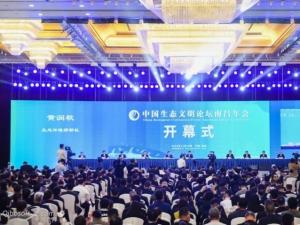Andreas Oberheitmann:COMMON, BUT DIFFERENTIATED RESPONSIBILITY
|
共同但有区别责任原则在后京都议定书时代人均温室气体排放权的适用 欧安德 共同但有区别责任原则是可持续发展的基础。其作为国际环境法原则首现于1992年于巴西里约热内卢举行的联合国环境与发展大会。该原则的本源为载于联合国气候变化框架公约及京都议定书的公平原则。该原则的主要内容包括共同的责任以及有区别的责任两点。本文拟就该原则在后京都议定书时代,于人均温室气体排放权方面的适用进行研究探讨。
COMMON, BUT DIFFERENTIATED RESPONSIBILITY IN A
Andreas Oberheitmann+ |
|||||||||||||||||||||||||||||||||||||||||||||||||||||||||||||||||||||||||||||||||||||||||||||||||||||||||||||||||||||||||||||||||||||||||||||||||||||||||||||||||||||||||||||||||||||||||||||||||||||||||||||||||||||||||||||||||||||||||||||||||||||||||||||||||||||||||||||||||||||||||||||||||||||||||||||||||||||||||||||||||||||||||||||||||||||||||||||||||||||||||||||||||||||||||||||||||||||||||||||||||||||||||||||||||||||||||||||||||||||||||||||||||||||||||||||||||||||||||||||||||||||||||||||||||||||||||||||||||||||||||||||||||||||||||||||||||||||||||||||||||||||||||||||||||||||||||||||||||||||||||||||||||||||||||||||||||||||||||||||||||||||||||||||||||||||||||||||||||||||||||||||||||||||||||||||||||||||||||||||||||||||||||||||||||||||||||||||||||||||||||||||||||||||||||||||||||||||||||||||||||||||||||||||||||||||||||||||||||||||||||||||||||||||||||||||||||||||||||||||||||||||||||||||||||||||||||||||||||||||||||||||||||||||||||||||||||||||||||||||||||||||||||||||||||||||||||||||||||||||||
| Strengths | Weaknesses | Possible remedies | |
| Per capitaconvergence inemission endowments |
|
|
|
| Soft Landing in emission growth |
|
|
|
| Global Preference Score Approach |
|
|
|
| Historical contribution to Climate Change |
|
|
|
| Ability to pay |
|
|
|
| Multi-stage approach |
|
|
|
| Source: CNRS/LEPII-EPE (2003), Tickell(2008). | |||
- they do not take into the fact into consideration, that on the one side, the developed countries are responsible for the current CO2-concentration in the atmosphere, on the other side developing countries such as China and India are to a large extent responsible for the current additional CO2-emissions which now start to accumulate in the atmosphere (which is partly done in the “Brazilian proposal”), and
- do not provide for a fair distribution of emission rights like in “per capita convergence in emission endowments” (which is done in per-capita approaches, but without the historical emissions).
The approach presented in this paper was firstly presented on an international conference in Münster, Germany in June 2009 and developed independently from the budget approach by the German Advisory Council on Climate Change published in July 2009 (WBGU, 2009). The allocation scheme presented here differs from WBGU (2009) as it comprises the cumulative emissions from 1750 on. WGBU (2009) only cumulates the remaining budget from 1990 to 2050 resp. 2010 to 2050 to achieve the global 2° C goal. To fully comply with the UNFCCC principle of "common but differentiated responsibilities", the historical emissions of the Annex-I countries also have to be taken into account for a new post Kyoto regime as undertaken in the approach presented in this article.
3. Common, but differentiated responsibilities in a climate regime based on per-capita cumulative emission rights to reach the 2°Ctarget
Against the background of the weaknesses states above, in this article, an alternative approach is presented taking into account the weaknesses of the other single concepts and in a way combining the “per capita convergence in emission endowments” and the “Brazilian proposal”: a climate regime based on per-capita cumulative emission rights to reach the 2°C target or a 400 ppm (450 ppm) concentration of CO2inthe atmosphere (Oberheitmann, 2010).In the newly proposed post Kyoto regime, the cumulated world CO2-emissions (in Mill. t) in year n are defined as (Equation 1):
consisting of the cumulated CO2-emissions from primary fossil energy consumption plus emission from bunkers (ships and airplanes)[1](CO2,bunker), the flaring of gas (CO2,flagas) and in cement production (CO2,cement) reduced by the natural absorption of the anthropogenic CO2-emissions of 1000 years ago (CO2WORLD,t-1000). In reality, very small parts of the emissions are absorbed every year. Most of the CO2remains in the atmosphere for thousand years, however. These emission absorptions had, in fact, been zero (Oberheitmann, 2010). Table 3 shows the development of the cumulated CO2-emissions in the world.
Table 3:
Development of cumulated CO2-emissions in the world
(1750-2007, in Mill. t)
| Year | Africa | AsiaPacific | China | India | Middle East | Central & South America | North America | Europe and Eurasia | World | OECD | Annex-I countries | Non-Annex-I countries |
| 1750 | 0 | 0 | 0 | 0 | 0 | 0 | 0 | 9 | 9 | 9 | 9 | 0 |
| 1850 | 39 | 0 | 0 | 0 | 0 | 0 | 191 | 4593 | 4823 | 4784 | 4784 | 39 |
| 1900 | 71 | 267 | 0 | 126 | 0 | 30 | 11008 | 33546 | 44921 | 42961 | 44673 | 249 |
| 1950 | 1855 | 6999 | 1881 | 2314 | 456 | 1560 | 96437 | 118329 | 225636 | 201018 | 216088 | 9548 |
| 1960 | 3248 | 14606 | 5114 | 3234 | 1052 | 3860 | 126344 | 153232 | 302343 | 255956 | 282963 | 19380 |
| 1970 | 5489 | 32009 | 11536 | 5087 | 3335 | 7510 | 168560 | 210667 | 427571 | 339628 | 388523 | 39047 |
| 1980 | 9680 | 66338 | 24937 | 7966 | 8224 | 13188 | 226306 | 292777 | 616513 | 458162 | 539378 | 77134 |
| 1990 | 16432 | 115454 | 46293 | 13096 | 14790 | 20286 | 286255 | 381809 | 835025 | 580732 | 699614 | 135412 |
| 2000 | 24666 | 192694 | 81003 | 21921 | 24926 | 29507 | 355771 | 458320 | 1085884 | 717616 | 855785 | 230098 |
| 2005 | 29729 | 244025 | 105632 | 27664 | 31846 | 34903 | 393785 | 495962 | 1230250 | 791878 | 936768 | 293482 |
| 2006 | 30827 | 256623 | 112411 | 29001 | 33466 | 36091 | 401478 | 503850 | 1262334 | 807051 | 953364 | 308970 |
| 2007 | 31973 | 269930 | 119696 | 30431 | 35130 | 37349 | 409303 | 512900 | 1296586 | 822329 | 970034 | 326552 |
| Source: Ober.heitmann (2010). | ||||||||||||
Table 4:
Development of cumulated CO2-emissions per capita in the world
(1950-2007)
| Country | 1950 | 1960 | 1970 | 1980 | 1990 | 2000 | 2005 | 2006 | 2007 |
| Africa | 10 | 13 | 15 | 20 | 27 | 31 | 33 | 34 | 34 |
| AsiaPacific | 5 | 9 | 16 | 27 | 40 | 57 | 69 | 71 | 74 |
| China | 4 | 8 | 14 | 25 | 40 | 64 | 81 | 86 | 91 |
| India | 6 | 7 | 10 | 12 | 16 | 21 | 25 | 26 | 27 |
| Japan | 1 | 19 | 68 | 151 | 230 | 329 | 382 | 393 | 405 |
| Middle East | 14 | 22 | 51 | 89 | 114 | 147 | 168 | 172 | 177 |
| Central & South America | 11 | 22 | 33 | 46 | 57 | 71 | 78 | 79 | 81 |
| Europe and Eurasia | 178 | 207 | 258 | 368 | 453 | 529 | 567 | 575 | 584 |
| Germany | 431 | 504 | 596 | 738 | 888 | 956 | 1012 | 1023 | 1035 |
| North America | 484 | 525 | 598 | 702 | 793 | 879 | 911 | 920 | 929 |
| USA | 580 | 639 | 751 | 908 | 1048 | 1172 | 1199 | 1207 | 1218 |
| World | 89 | 100 | 116 | 139 | 160 | 180 | 192 | 195 | 198 |
| OECD | 293 | 329 | 387 | 473 | 557 | 630 | 670 | 679 | 688 |
| Annex-I countries | 251 | 289 | 357 | 455 | 553 | 674 | 720 | 730 | 740 |
| Non-Annex-I countries | 6 | 10 | 15 | 24 | 34 | 48 | 58 | 60 | 62 |
| Source: Ober.heitmann(2010). | |||||||||
In the approach presented in this article, a growing population over time, however, should not lead to an increase of the total emission budget of a country, but on the contrary to an incentive to increase energy efficiency, the promotion of renewable energy sources or possibly adopt a pro-active population growth policy (this, however, can be ethically questionable). Hence, after 2007, the CO2-emissions per capita for each country (m) will be calculated according to Equation 2:
Table 5 shows the development of cumulated CO2-emissions in the world in different scenarios of economic growth (OBERHEITMANN, 2010). In the business as usual scenario (BAU) cumulated CO2-emissions worldwide reach about 3290 bn. tons of CO2 in2050. These cumulated CO2-emissions represent a CO2-concentration in the atmosphere of 519 ppm. China takes a share of 23.4% of cumulated world emissions.
Table 5:
Development of cumulated CO2-emissions in the world
(2010-2050, in bn. t CO2,cum)
| Country | 2010 | 2020 | 2030 | 2040 | 2050 | Percent of World (2050) |
| BAU | ||||||
| Africa | 40 | 50 | 60 | 70 | 80 | 2.4 |
| AsiaPacific | 310 | 480 | 700 | 950 | 1250 | 38.0 |
| China | 140 | 240 | 380 | 560 | 770 | 23.4 |
| India | 40 | 50 | 70 | 100 | 130 | 4.0 |
| Japan | 60 | 70 | 90 | 100 | 110 | 3.3 |
| Middle East | 40 | 60 | 80 | 100 | 120 | 3.6 |
| Central & South America | 40 | 50 | 60 | 80 | 90 | 2.7 |
| Europe and Eurasia | 540 | 630 | 730 | 840 | 950 | 28.9 |
| Germany | 90 | 100 | 110 | 120 | 130 | 4.0 |
| North America | 430 | 520 | 610 | 700 | 800 | 24.3 |
| USA | 390 | 470 | 540 | 630 | 710 | 21.6 |
| World | 1400 | 1790 | 2240 | 2740 | 3290 | 100.0 |
| OECD | 870 | 1040 | 1210 | 1390 | 1570 | 47.7 |
| Annex-I countries | 1020 | 1210 | 1410 | 1610 | 1820 | 55.3 |
| Non-Annex-I countries | 380 | 580 | 830 | 1130 | 1470 | 44.7 |
| HIGH | ||||||
| Africa | 40 | 50 | 60 | 70 | 80 | 2.3 |
| AsiaPacific | 310 | 490 | 720 | 1010 | 1380 | 39.9 |
| China | 140 | 250 | 400 | 600 | 880 | 25.4 |
| India | 40 | 50 | 80 | 100 | 130 | 3.8 |
| Japan | 60 | 70 | 90 | 100 | 120 | 3.5 |
| Middle East | 40 | 60 | 80 | 100 | 130 | 3.8 |
| Central & South America | 40 | 50 | 60 | 80 | 90 | 2.6 |
| Europe and Eurasia | 540 | 630 | 740 | 850 | 980 | 28.3 |
| Germany | 90 | 100 | 110 | 120 | 130 | 3.8 |
| North America | 430 | 520 | 610 | 710 | 810 | 23.4 |
| USA | 390 | 470 | 550 | 630 | 720 | 20.8 |
| World | 1400 | 1800 | 2260 | 2820 | 3460 | 100.0 |
| OECD | 870 | 1040 | 1210 | 1400 | 1590 | 46.0 |
| Annex-I countries | 1020 | 1210 | 1410 | 1630 | 1850 | 53.5 |
| Non-Annex-I countries | 380 | 580 | 850 | 1190 | 1610 | 46.5 |
| LOW | ||||||
| Africa | 40 | 50 | 60 | 70 | 80 | 2.6 |
| AsiaPacific | 310 | 470 | 660 | 870 | 1100 | 35.6 |
| China | 140 | 240 | 350 | 490 | 650 | 21.0 |
| India | 40 | 50 | 70 | 90 | 120 | 3.9 |
| Japan | 60 | 70 | 90 | 100 | 110 | 3.6 |
| Middle East | 40 | 60 | 80 | 100 | 120 | 3.9 |
| Central & South America | 40 | 50 | 60 | 80 | 90 | 2.9 |
| Europe and Eurasia | 540 | 630 | 730 | 820 | 930 | 30.1 |
| Germany | 90 | 100 | 110 | 120 | 130 | 4.2 |
| North America | 430 | 520 | 610 | 700 | 780 | 25.2 |
| USA | 390 | 460 | 540 | 620 | 700 | 22.7 |
| World | 1400 | 1780 | 2190 | 2630 | 3090 | 100.0 |
| OECD | 870 | 1030 | 1200 | 1370 | 1540 | 49.8 |
| Annex-I countries | 1020 | 1210 | 1400 | 1590 | 1790 | 57.9 |
| Non-Annex-I countries | 380 | 570 | 790 | 1040 | 1310 | 42.4 |
| Source: Ober.heitmann(2010). | ||||||
Finally, Table 6 shows the development of cumulated CO2-emissions per capita in the world, calculated on the 2007 population. To better compare it with the 400 ppm, resp. 450 ppm thresholds, these two figures are highlighted.
Table 6:
Development of cumulated CO2-emissions per capita1inthe world
(2010-2050, in t CO2,cum)
| BAU | |||||
| 2010 | 2020 | 2030 | 2040 | 2050 | |
| Africa | 38 | 49 | 61 | 73 | 84 |
| AsiaPacific | 86 | 133 | 191 | 263 | 344 |
| China | 109 | 185 | 289 | 422 | 582 |
| India | 31 | 47 | 66 | 88 | 112 |
| Japan | 439 | 556 | 673 | 788 | 897 |
| Middle East | 200 | 287 | 387 | 497 | 617 |
| Central & South America | 88 | 113 | 139 | 165 | 192 |
| Europe and Eurasia | 614 | 720 | 835 | 959 | 1088 |
| Germany | 1070 | 1188 | 1309 | 1432 | 1556 |
| North America | 985 | 1180 | 1385 | 1596 | 1809 |
| USA | 1290 | 1537 | 1798 | 2068 | 2343 |
| World | 214 | 273 | 341 | 419 | 502 |
| OECD | 728 | 866 | 1011 | 1160 | 1309 |
| Annex-I countries | 781 | 924 | 1074 | 1231 | 280 |
| Non-Annex-I countries | 72 | 111 | 158 | 216 | 86 |
| 400 ppm | 247 | 247 | 247 | 247 | 247 |
| 450 ppm | 355 | 355 | 355 | 355 | 355 |
| HIGH | |||||
| Africa | 38 | 50 | 62 | 74 | 86 |
| AsiaPacific | 86 | 134 | 197 | 278 | 380 |
| China | 109 | 188 | 300 | 457 | 665 |
| India | 31 | 47 | 67 | 91 | 119 |
| Japan | 439 | 557 | 676 | 796 | 912 |
| Middle East | 200 | 289 | 391 | 507 | 634 |
| Central & South America | 88 | 113 | 140 | 167 | 194 |
| Europe and Eurasia | 614 | 721 | 840 | 971 | 1114 |
| Germany | 1070 | 1189 | 1310 | 1434 | 1560 |
| North America | 985 | 1182 | 1389 | 1606 | 1829 |
| USA | 1290 | 1539 | 1803 | 2081 | 2368 |
| World | 214 | 274 | 346 | 430 | 528 |
| OECD | 728 | 867 | 1015 | 1169 | 1327 |
| Annex-I countries | 782 | 925 | 1079 | 1242 | 1413 |
| Non-Annex-I countries | 72 | 112 | 162 | 227 | 307 |
| 400 ppm | 247 | 247 | 247 | 247 | 247 |
| 450 ppm | 355 | 355 | 355 | 355 | 355 |
| LOW | |||||
| Africa | 38 | 49 | 61 | 71 | 82 |
| AsiaPacific | 86 | 130 | 182 | 239 | 303 |
| China | 109 | 180 | 268 | 372 | 490 |
| India | 31 | 46 | 64 | 84 | 104 |
| Japan | 439 | 553 | 667 | 775 | 876 |
| Middle East | 200 | 285 | 379 | 482 | 593 |
| Central & South America | 88 | 112 | 137 | 163 | 188 |
| Europe and Eurasia | 614 | 717 | 826 | 940 | 1057 |
| Germany | 1070 | 1188 | 1308 | 1429 | 1551 |
| North America | 985 | 1177 | 1376 | 1578 | 1781 |
| USA | 1290 | 1534 | 1786 | 2045 | 2308 |
| World | 214 | 271 | 334 | 401 | 472 |
| OECD | 728 | 864 | 1003 | 1145 | 1286 |
| Annex-I countries | 781 | 921 | 1066 | 1213 | 1363 |
| Non-Annex-I countries | 72 | 109 | 151 | 198 | 250 |
| 400 ppm | 247 | 247 | 247 | 247 | 247 |
| 450 ppm | 355 | 355 | 355 | 355 | 355 |
| Source: Ober.heitmann(2010). 1) 2007 population. | |||||
- In the BAU-scenario, worldwide, the 400 ppm threshold is reached by 2015, the 450 ppm threshold by 2031. According to the simulations, China has to stabilise its cumulative CO2-emissions on the 2026 level (400 ppm) resp. 2035 (450 ppm). On the average, all Non-Annex-I countries will reach this target by 2045. In the HIGH scenario of economic growth, China will reach the 400 ppm threshold by 2025, the 450 ppm threshold by 2034 (worldwide: 400 ppm by 2015, 450 ppm by 2031). In the LOW-scnenario, worldwide, 400 ppm will be reached by 2016, 450 ppm by 2033. China’s cumulated CO2-emissions per capita will reach the 247 t CO2,cum level (400 ppm) by 2028, the 355 t CO2,cum level (450 ppm) by 2038 (Table 11).
- The Annex-I countries, however, on the average would have to reduce their cumulated CO2-emissions per capita to their 1950 level instead of facing a further increase. In 2007, that would have meant to reduce per-capita cumulated emissions from 740 t CO2,cumby 493 t CO2,cumto 247 t CO2,cum. Multiplied with the 2007 Annex-I country population (1.310 bn.),this resulted in a CO2-emission reduction commitment of 646.2 bn t CO2,cum, down to the 400 ppm level, resp. 505.1 bn t CO2,cum, down to the 450 ppm level, provided, there were be no new CO2-emissions after 2007. As additional CO2after 2007 had been emitted up to now and CO2-emissions into the atmosphere will certainly occur, because an economy cannot switch to a zero carbon path from one year to another, incremental CO2-emissions after 2008 have to be taken into account.
Table 7:
Emission reduction target and costs for the Annex-I countries in different economic growth scenarios and CO2-concentration caps up to 2050
(2010 and 2020, in bn. t CO2,,cum and US$)
| 400 ppm | |||||||||
| Reduction target (bn. t CO2,cum) | Reduction costs (trillion US$) | Reduction costs per capita (US$) | |||||||
| Start of reduction measures | BAU | HIGH | LOW | BAU | HIGH | LOW | BAU | HIGH | LOW |
| 2010 | 681.9 | 682.0 | 681.8 | 34.1 | 34.1 | 34.1 | 26000 | 26000 | 26000 |
| 2020a) | 867.2 | 868.7 | 864.2 | 37.9 | 38.0 | 37.8 | 29000 | 29000 | 28900 |
| 450 ppm | |||||||||
| Reduction target (bn. t CO2,cum) | Reduction costs (trillion US$) | Reduction costs per capita (US$) | |||||||
| Start of reduction measures | BAU | HIGH | LOW | BAU | HIGH | LOW | BAU | HIGH | LOW |
| 2010 | 540.8 | 540.9 | 540.7 | 27.0 | 27.0 | 27.0 | 20600 | 20600 | 20600 |
| 2020a) | 726.1 | 727.6 | 723.2 | 31.8 | 31.8 | 31.6 | 24300 | 24300 | 24200 |
| Source: Ober.heitmann(2010). a) Net present value (interest rate = 2.5%). | |||||||||
Long-term, these massive CO2-emission reductions can only be realised by “negative” emissions, i.e. a combination of renewable energy production (e.g. bio-fuels) or afforestation and a carbon capture and storage (CCS) of fossil fuel emissions. Different approaches are thinkable, inter alia:
- a combination of renewable energy production (e.g. bio-fuels) and CCS of the emission from the combustion of these bio-fuels. In this case, the renewable energy production leads to a sequestration of carbon in the biomass (negative emissions) and a capture of the carbon accruing from the combustion of the biomass (zero-emission).
- a combination of afforestation (preferably quickly growing biomass) without later logging and CCS of fossil fuel emissions, e.g. from coal combustion for power generation in an integrated gas combined cycle (IGCC).
In a growing world economy (HIGH), on the one side this is even more difficult to reach these negative emissions as energy demand tends to grow. However, on the other side, only a growing economy provides for sufficient investment capital. A slower growth of the world economy (LOW) would reduce the growth of energy demand, but the economies might be more reluctant to make long-term investments in negative emissions because they might see a trade-off between the investments and economic growth and be worried about the implications on their international competitiveness if there is not a global approach.
However, the proposed new post Kyoto regime also allows for an international emissions trading. If countries did not have reached their limit of cumulated per capita CO2-emissions, they could sell them to other countries being short of emission rights. The same is for certificates accruing from the other flexible mechanism under the Kyoto Protocol, i.e. the Clean Development Mechanism (Art. 12), Joint Implementation (Art. 6) and from Land-use, Land-use Change and Forestry (Art. 3,4). Against the background of the problems mentioned before, this would be a more feasible option for the Annex-I countries at least mid-term. Whether the Non-Annex- I countries may agree on that, is a political issue. Currently, they may have emissions rights left which they could sell. However, when their economies are reaching their budget threshold in the future (e.g. China in around 2025), the remaining emission rights are getting scarce.
The approach presented in this article still has certain limits and provides scope for further works. Especially on the data side, the non-CO2-emissions of the Kyoto protocol (CH4, N2O, HFCs, PFCs and SF6) have to be collected and calculated for all the Non-Annex-I countries. Due to the lack of data, the concept presented here is only based on cumulative CO2-emissions rather than GHG-emissions. On the mitigation cost side, increasing marginal abatement costs have to be taken into account in a next step. For reasons of simplicity, constant costs are assumed here. In a next step, the analysis of the impact of different paths of GDP of other important Non-Annex-I countries on their obligations in the proposed Post Kyoto regime such as Brazil, South-Africa, Indonesia etc. has to be targeted at.
4. Summary
The principle of "Common but Differentiated Responsibility" is one of the cornerstones of sustainable development. It arises from the concept of common heritage and common concern of humankind, and reflects the duty of States of equally sharing the burden of environmental protection for common resources and at the same time takes substantive inequality in the different framework conditions of the single countries into account.COP 15 in Copenhagen in December 2009 to a large extent failed, because the US and China, together responsible for 40% of global CO2-emissions, did not come forward with a substantial emission reduction targets. As the US only proposed emission reduction which did not even reach the reduction amount fixed in the Kyoto Protocol 12 years ago, it made it difficult for China to put forward a more substantial target. If these two mega-players do not reach a consensus and take the reluctance of the other as an excuse for an own substantial move, there will be no global success on the mitigation of global climate change. Against this background, a new cooperative climate regime is necessary to meet the World’s energy and environmental problems. COP 17 in Durban brought about a general international agreement on a post Kyoto regime, which, however has to be filled with life until 2015 and will come into effect in 2020.
The currently discussed approaches of post Kyoto regimes have a common weakness that at the same time (a) theydo not acknowledge the historical responsibilities of the industrialized countries for the historical greenhouse gas emissions and the responsibility of developing countries for a large fraction of the future emissions, and (b) they do not provide for a fair distribution of emissions.
Taking the current shortcomings into account, an alternative climate regime proposed in this paper is based on cumulative CO2-emissions taking the historical emissions into account and being in line with the principle of "Common, but Differentiated Responsibilities". In absolute terms, the Annex-I countries currently represent 74.8% of the world cumulative CO2-emissions, the OECD countries 63.4%. The Non-Annex-I countries are only responsible for 25.2% of the cumulated emissions, of which China represent 9.2% points. However, by 2007, with 119.7 bn CO2,cum, China, already almost exceeded the cumulative CO2-emissions of Germany (85.1 bn t CO2,cum) and France (35.5 bn t CO2,cum) together.
By dividing CO2-concemtration of 400 ppm (450 ppm) in atmosphere equivalent to a stabilisation of global warming to 2°C through the world population in 2007, the new regime allocates 247 (355) t CO2,cum as an allowed amount to for each individual of a country in the world. To provide for an incentive to reduce CO2inabsolute terms, the 2007 world population of 6.5 bn. is taken for the specific target. This means, growing CO2-emissions cannot be compensated by a growing population, but provide an incentive for climate change mitigation measures.
Figure 1 shows the development of the cumulated CO2-emissions per capita in the three scenarios. Taking the threshold of 247 t CO2,cumper capita (400 ppm) resp. 355 t CO2,cumper capita (450 ppm) as a yardstick, it is quite obvious that the industrialized countries have exceeded their emission budget per capita by far. In 2007, the US citizens consumed 1218 t CO2,cumper capita, the Germans 1035 CO2,cumper capita, far above the average of the OECD average (688 CO2,cumper capita). In 2007, China only consumed 91 t CO2,cumper capita.
Figure 1:
Cumulated CO2-emissions per capita in different scenarios of GDP growth
(t per capita, 2010-2050)
Cumulated CO2-emissions per capita in different scenarios of GDP growth
(t per capita, 2010-2050)
|
BAU |
HIGH |
|
LOW |
In the BAU-scenario, worldwide, the 400 ppm threshold is reached by 2015, the 450 ppm threshold by 2031. According to the simulations, China has to stabilise its cumulative CO2-emissions on the 2026 level (400 ppm) resp. 2035 (450 ppm).. On the average, all Non-Annex-I countries will reach this target by 2045. In the HIGH scenario of economic growth, China will reach the 400 ppm threshold by 2025, the 450 ppm threshold by 2034 (worldwide: 400 ppm by 2015, 450 ppm by 2031). In the LOW-scnenario, worldwide, 400 ppm will be reached by 2016, 450 ppm by 2033. China’s cumulated CO2-emissions per capita will reach the 247 t CO2,cum level (400 ppm) by 2028, the 355 t CO2,cum level (450 ppm) by 2038.
The Annex-I countries, however, already exceeded their budgets by far. They have to reduce their cumulated CO2-emissions per capita to their 1950 level instead of facing a further increase.
To implement such as system, political hurdles have to be overcome. As earlier indicated by den Elzen, Lucas and Vuuren (2005), a cumulative emission approach provides a larger financial burden for the Annex-I countries. The fear of negative implications for the domestic industry may be reasonable. However, the private investments in green energy may also provide for a considerable increase in employment in these countries. In addition, the global financial crisis showed that governments are also willing to spend huge amounts of finance to mitigate their negative impacts. For reasons of simplicity, constant CO2-emission reduction costs are assumed. Marginal abatement cost curves for all 70 countries are not available to this point of time and mark need for further research. Assuming constant CO2-emission reduction costs of 50 US$ per ton, the mitigation of climate change for the Annex-I countries would be costly, about 34 trillion US$ (400 ppm) resp. 27 trillion US$. Per capita, however, these are between 20000 and 26000 US$, about two to three times, e.g. the German government reserved as guarantees and government spending for the current international financial crisis. Investments of 20000 and 26000 US$ per capita on a time scale of 40 years means 515-650 US$ per year or 43-54 US$ per month for every Annex-I country inhabitant.
Early action to mitigate climate change is of the essence. A delay of climate change mitigation measures of only ten years after 2010 would increase the mitigation costs for the Annex I countries by around 30%. A delay of action would also increase the probability of accelerating CO2-emissions from triggered feedbacks not considered in earlier models, such as release of methane trapped under melting permafrost, acidification of oceans, etc. (Worldwatch Institute, 2009).
Technically, the Annex-I countries can achieve their emission reduction targets only through a combination of bio-fuels or a sustainable afforestation and CCS. However, CCS is still in its technical development stage. The alternative is a global emission trading scheme which allows countries with surplus emission rights to sell them to other countries lacking these rights (Oberheitmann, 2010). Such as global emission trading scheme, however is politically sensitive as in the future, developing countries such as China may face a scarcity of emission rights. Such a post-Kyoto regime may also provide incentives to bank emission right which can be used in the future. Countries with large foreign exchange reserves such as China may be well advised to do so.
References
China Climate Change Info-net (2009). http://www.ccchina.gov.cn/en/Public_Right.asp?class=25.CNRS/LEPII-EPE, RIVM/MNP, ICCS-NTUA and CES-KUL (2003). Greenhouse gas reduction pathways in the UNFCCC process up to 2025. Policymakers summary. Mimeo.
den Elzen, M., Lucas, P. and D. Vuuren (2005). Abatement costs of post-Kyoto climate regime. Energy Policy 33 (16): 2138-2151.
Oberheitmann, A.(2010). A new post-Kyoto climate regime based on per-capita cumulative emissions rights – Rationale, Architecture and quantitative assessment of the Implication for the CO2-emissions from China, India and the Annex-I Countries by 2050. Mitigation and Adaptation Strategies for Global Change. 15 (2010) 2: 137-168.
Project Team of Development Research Center of the State Council of China(2009). Greenhouse Gas Emissions Reduction: A Theoretical Framework and Global Solution. Economic Research Journal, 44 (3): 4-14.
Russa, P. and Criquib, P. (2007). Post-Kyoto CO2-emission reduction: The soft landing scenario analysed with POLES and other world models. Energy Policy 35 (2007): 786–796.
The Encyclopedia of Earth(2007): Common but differentiated responsibility. http://www.eoearth.org/article/Common_but_differentiated_responsibility?topic=49477.
The People’s Republic of China(2004). Initial National Communication on Climate Change. Beijing.
Tickell, O.(2008). Kyoto2: How to Manage the Global Greenhouse. Zed Books, London.
UNFCCC (1997). Paper No. 1: Brazil; Proposed Elements of a Protocol to the United Nations Framework Convention on Climate Change. UNFCCC/AGBM/1997/MISC.1/Add.3 GE.97, Bonn.
UNFCCC (2012). Expected annual CERs from registered projects. http://cdm.unfccc.int/Statistics/Issuance/CERsIssuedByHostPartyPieChart.html
WBGU (2009). German Advisory Council on Climate Change (WBGU). Solving the climate dilemma – the budget approach. Berlin, 09.07.2009. Mimeo.
Worldwatch Institute(2009). State of the World 2009: Into a Warming World. Washington.
[1] Only up to 1964. As from 1965, bunkers were included in the data of primary energy consumption of BP (2008).
+ Prof. Andreas Oberheitmann, Ph.D., Director of the Research Center for International Environmental Policy (RCIEP), School of Environment, Tsinghua University, Beijing and Senior Research Fellow at the Rheinisch-Westfälisches Institut für Wirtschaftsforschung, Essen. Address: Tsinghua University, Sino-Italian Energy Efficiency Building, Room 1004, Haidian District, 100084 Beijing, China. E-Mail: oberheitmann@tsinghua.edu.cn. Tel: 0086-10-6279.-4115, Ext. 8002.
[1] 1995 can be optionally taken as the baseline year for HFCs, PFCs, and SF6 (Art. 3,8).
[2] Members of the Committee are Ministry of Finance, Ministry of Commerce, Ministry of Agriculture, Ministry of Construction, Ministry of Communications, Ministry of Water Resources, State Forestry Administration, Chinese Academy of Science, State Ocean Administration, Civil Aviation Administration.
[3] An Annex-I country (i.e., an OECD country or an East or Central European country in transition) wishing to get credits from a CDM project must obtain the consent of the developing country hosting the project that the project will contribute to its sustainable development. Then, in a Project Design Document (PDD), using baseline and monitoring methodologies approved by the CDM Executive Board (CDM EB), the Annex-I country has to prove that the project activity and the incurring greenhouse gas emission reductions would not have happened anyway (establishing additionality), and must establish a baseline (the business as usual case) enabling him to estimate the future emissions in absence of the registered project. The project is then validated by a third party agency, called Designated Operational Entity (DOE). The function of the DOE is to ensure and certify that the project results in real, measurable, and long-term emission reductions. The EB then decides whether or not to register (approve) the project. If a project is registered and implemented, the CDM EB issues credits, Certified Emission Reductions (CERs), each unit equivalent to the reduction of one metric tonne of CO2. These CERs are issued to the project participants based on the monitored difference between the baseline and the actually monitored emissions, verified by the DOE.
我来说两句
已有0评论 点击全部查看






